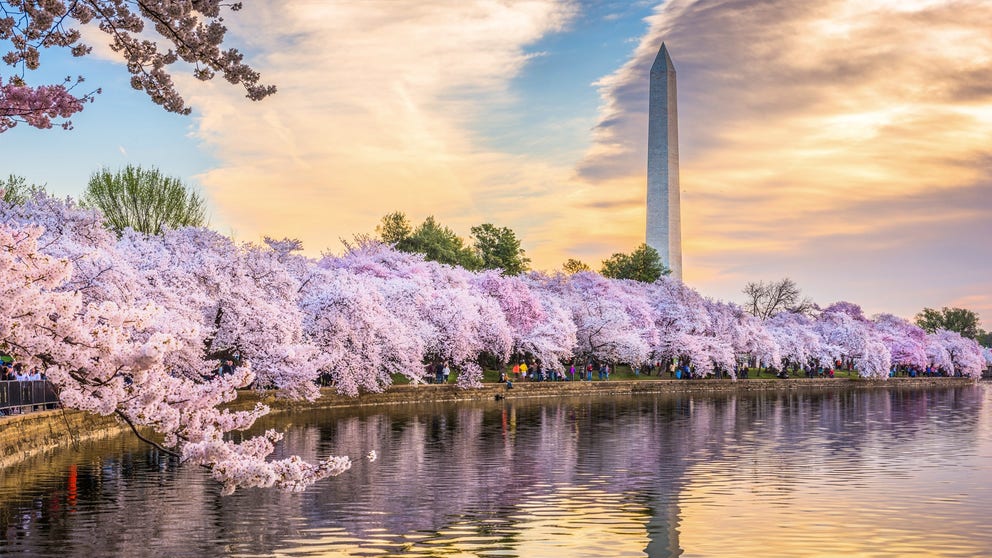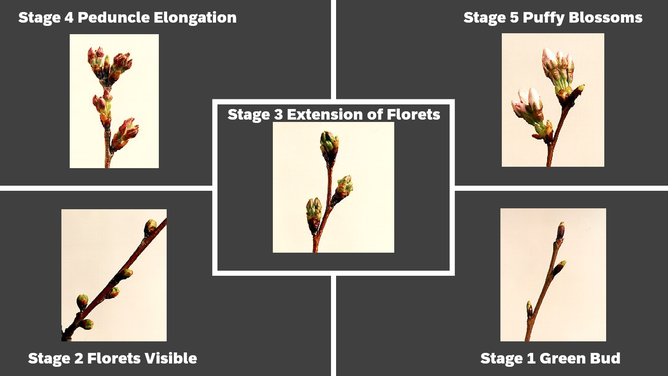Blooms or bust: How weather can affect DC's cherry blossoms
Rain can bring blossoms to the ground. Wind can tear them apart. But blue skies and warm temperatures can create an explosion of pink petal clouds.
How Washington, DC got its famous cherry blossom trees
In 1912, Japan gifted 3,000 flowering cherry trees to Washington, DC. Today, the National Cherry Blossom Festival honors that gift of friendship.
Cherry blossoms are a signature part of spring in Washington, D.C., bringing more than 1.5 million visitors to the nation’s capital every year.
But as any tourist or Washington, D.C. resident knows, the weather can make or break the cherry blossom viewing experience.
From blue skies and warm temperatures causing an explosion of pink petal clouds to cold wind and rain bringing the flowers to the ground, a wide range of temperatures and precipitation can dictate the fates of cherry blossoms.
When the cherry blossoms bloom
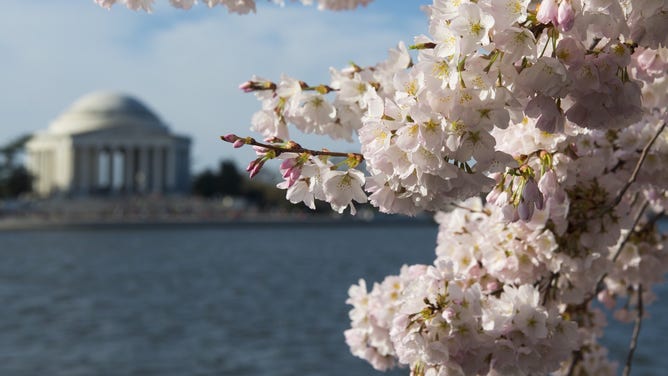
Cherry trees blossom around the Tidal Basin near the Jefferson Memorial on the National Mall in Washington, DC, April 11, 2015.
(SAUL LOEB / AFP / Getty Images)
Cherry blossom season happens during spring, particularly around what’s known as the cherry trees’ peak bloom.
Peak bloom is defined as the day when 70% of the blossoms on the Yoshino Cherry trees, one of the most common species of cherry trees in the nation’s capital, are open.
DC CHERRY BLOSSOMS TO REACH PEAK BLOOM THIS WEEK
According to the National Park Service, which takes care of the cherry trees, the trees go through six stages in their bloom cycle:
- Green Buds
- Florets Visible
- Extension of Florets
- Peduncle Elongation
- Puffy White
- Peak Bloom
Their bloom cycle varies from year to year, the NPS said.
While the last stage of the cycle, peak bloom, typically occurs between the last week of March and the first week of April, its exact timing varies, as well as both peak bloom and the larger bloom cycle largely depend on the weather.
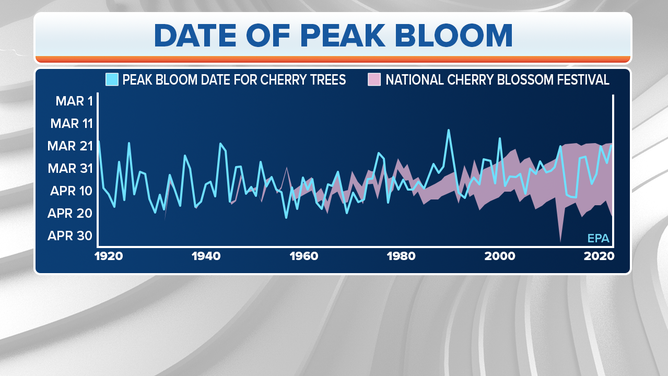
Graph showing dates of peak bloom of DC's cherry trees historically
(Environmental Protection Agency / FOX Weather)
How temperature impacts the cherry blossom bloom cycle
The cherry trees are phenological or driven by heat, said National Mall spokesperson Mike Litterst.
If warm temperatures occur during their bloom cycle, the cycle will begin sooner or progress more quickly. On the flip side, the bloom cycle may be delayed or move more slowly if cooler temperatures occur.
In some years, Litterst said warm conditions caused the trees to progress from stage five or "Puffy White" to stage six or "Peak Bloom" in just two days. In other years, however, different conditions caused the trees to take a week or more to make the same progress.

A man walks through the rain while the cherry trees blossom along the Tidal Basin on the National Mall March 31, 2019 in Washington, DC.
(BRENDAN SMIALOWSKI / AFP / Getty Images)
The earliest peak bloom was recorded on March 15, 1990, due to "extraordinary" warm temperatures, said the NPS. They also noted that the latest peak bloom was recorded on April 8, 1958, due to "extraordinary" cool temperatures.
Once at peak bloom, Litterst said the blossoms may last between a few days to no more than 10 days depending on the weather. According to the NPS, cool, calm weather can extend the length of the bloom, while a rainy, windy day can end the blossoms.
Some weather conditions may prevent the trees from blooming completely. A late frost can cause such a disappointing end.
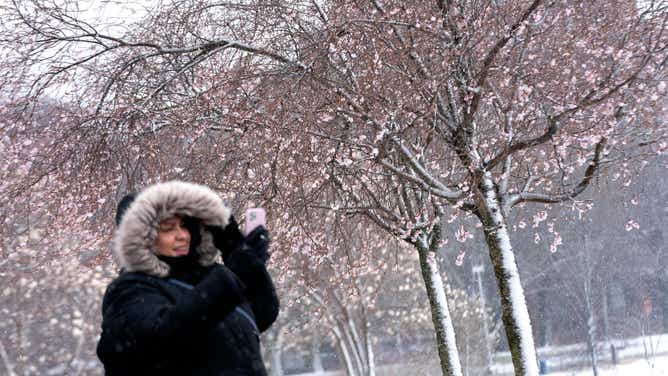
A visitor takes photos in front of snow covered Cherry Blossoms along the National Mall in Washington, DC, on March 12, 2022.
(STEFANI REYNOLDS / AFP / Getty Images)
The history behind DC’s cherry blossoms
Cherry blossoms have been a part of Washington, D.C., for over 100 years.
In 1912, Japan gave the U.S. 6,000 cherry trees as a sign of friendship between the two nations. In return, the U.S. gave Japan flowering dogwood trees, which are native to North America.
WHY DC HAS JAPANESE CHERRY BLOSSOMS
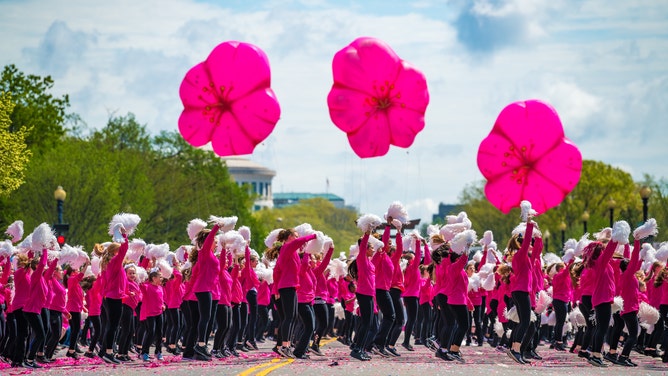
The cherry blossoms, called "sakura," serve as a motif throughout the festival events. Here, balloons in the shape of cherry blossoms float above a parade.
(Doug Van Sant / National Cherry Blossom Festival / FOX Weather)
The trees were divided between New York City and Washington, D.C. In the latter, the trees were planted throughout the city, with the most popular ones planted around the National Mall and Tidal Basin.
Today, the trees stand as a testament to that friendship between the U.S. and Japan, a living valentine celebrated every spring.
